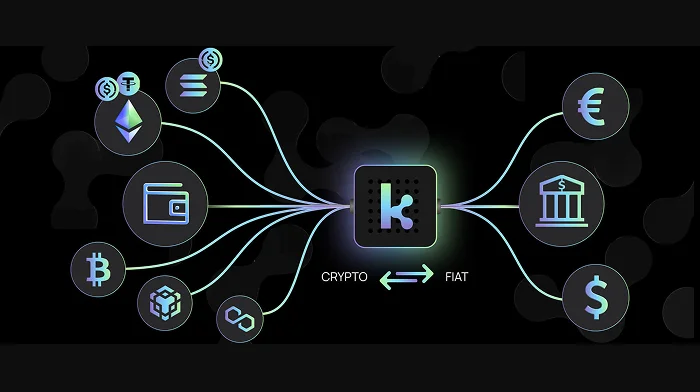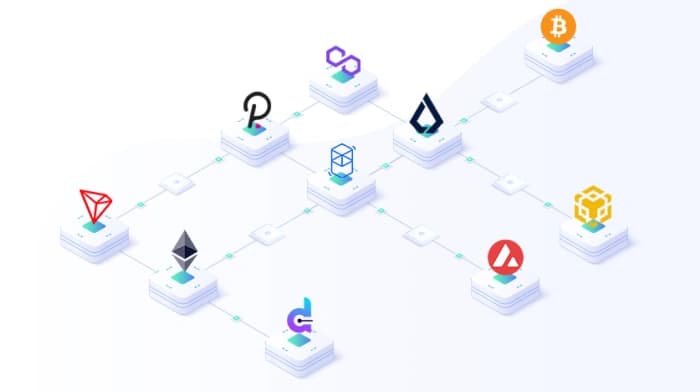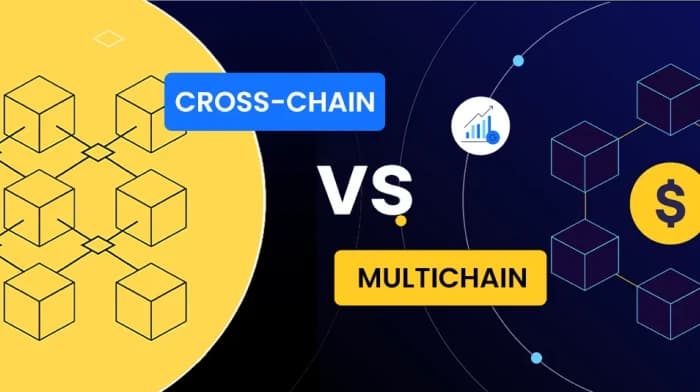
Introduction
By 2025 businesses won't just be looking into blockchain. They'll be demanding connected platforms. As companies become more comfortable using decentralized tech a major challenge will pop up; how can these separate blockchains actually talk to each other?
The problem is that most blockchains currently work in isolation, which makes it hard for them to share information or assets. What if they could do that without needing some central authority to oversee the process?
This is where the idea of blockchain interoperability comes in. Essentially interoperability solutions allow different blockchains to exchange data and assets freely without relying on middlemen.
Being able to communicate across platforms can really boost productivity and open up new possibilities for innovative business solutions, particularly in areas like:
- Supply chain management
- Finance
- Healthcare
This article takes a look at how blockchain interoperability's likely to change the way companies use this technology in 2025. We'll be exploring the effects of interoperability on systems, including how it can make data sharing easier and improve collaboration.
What is Blockchain Interoperability?
In terms it's about different blockchain networks being able to exchange information and work together without any issues. Imagine a world with blockchains, each with its set of rules, ways of agreeing on things and specific uses.
The key to making this work is interoperability. It ensures these separate networks don't operate in isolation. Instead they interact and function as a unified unit.
Market Growth Projections
The future of blockchain interoperability looks promising. Over the years this market is expected to experience rapid growth with a yearly increase of 28.30%.
Blockchain Interoperability Market Projections
| Year | Market Value |
|---|---|
| 2024 | $0.65 billion |
| 2025 | $0.83 billion |
| 2034 | $7.90 billion (projected) |
Historically blockchain systems were self contained, limited to their networks. However as the landscape evolves we're seeing a shift towards a harmonious ecosystem.
Companies struggling to integrate chain plans or add decentralized systems to their existing platforms faced significant hurdles. The beauty of compatibility lies in its ability to:
- Seamlessly swap currencies
- Share contracts
- Manage assets across networks in a unified manner
This streamlined approach is crucial for businesses looking to expand their reach.
Real-World Example: Chainlink's CCIP
Take Chainlink's Cross Chain Interoperability Protocol, for instance. This innovative solution enables blockchains to communicate with one another in an efficient way, paving the way for an interconnected ecosystem.
By facilitating dialogue between blockchain networks, CCIP opens up possibilities for businesses to operate smoothly across multiple platforms.
When companies team up they can do more together and offer services. Think platforms that work across multiple blockchains:
- Tracking goods as they move around the world
- Making international payments easier
Why Blockchain Interoperability is Crucial for Businesses
What makes blockchain interoperability so crucial for businesses? It's not about the tech. It's also a necessity. To stay on top companies need to:
- Be efficient
- Keep costs down
- Stay competitive
This means linking up all their systems and blockchain networks both within the company and across the globe. Essentially blockchain interoperability is key to helping businesses work smoothly and make the most of their technology.
Enterprise Benefits
Cross chain interoperability is key to connecting systems and creating a digital framework. This is crucial for enterprises. Here's why:
Enterprise environments thrive on interoperability, which allows them to transfer data smoothly across blockchain systems. This ensures that information stays consistent and coordinated no matter the platform.
Many enterprises work with blockchains, each serving a purpose:
- Managing supply chains
- Financial transactions
- Identity verification
Even when these purposes are related, the different blockchains often operate independently making coordination a challenge.
Interoperability simplifies things by streamlining operations and speeding up decision making. It reduces the need for data reconciliation and eliminates the necessity for external intermediaries.
Key Enterprise Advantages
- Flexibility: As new blockchain technologies emerge, interoperability gives enterprises the flexibility to integrate them into existing infrastructure without starting from scratch
- Cost Efficiency: This saves time and resources while paving the way for long-term scalability and growth
- Enhanced Customer Experience: Improves the way customers, partners and stakeholders interact with businesses
- Future-Proofing: With interoperability, enterprises can future-proof their investments, ensuring business solutions stay relevant and adaptable
How Does Blockchain Interoperability Work?
It facilitates communication and data exchange between blockchain networks, each with its set of rules, consensus mechanisms and data formats. It does all this without relying on intermediaries, creating a more connected and cohesive ecosystem.
Good communication is crucial in companies where multiple blockchains are used for different things. When lots of systems are in place, it's really important that data flows smoothly so everything runs efficiently.
Core Technology Components
At its core this method is about using a type of technology that safely records and stores data across a network that isn't controlled by an entity. This means that data is stored in a way that's secure and reliable, which is especially important in situations where there's a lot of information being shared.
Each blockchain runs on its own, so to get them to work together we need something to connect them. This is where interoperability layers or protocols come in.
Technical Implementation Methods
Relays and Bridges
- These are contracts that let one blockchain verify and oversee what's happening on another
- Relays act as middlemen passing on transaction confirmations between chains without needing someone to vouch for each other
Atomic Swaps
- This is a way for people to trade assets with each other even if they're on blockchains, without having to go through a central exchange
- It's a direct way to get things done
Middleware Protocols
Examples include:
- Polkadot
- Cosmos
- Hyperledger
These act as a kind of layer that connects blockchains. Think of it like a translator that helps different blockchain systems communicate with each other.
Inter-Blockchain Communication (IBC)
The Cosmos network relies on a protocol known as IBC, which sets the ground rules for how different blockchains can talk to each other. This allows them to work together in an organized way.
In the business world, companies often use APIs to help their existing systems communicate with blockchain networks. These APIs act as a bridge, making it possible for legacy systems and blockchain technology to interact smoothly.
Key Interoperability Technologies
Oracles and External Data Feeds
Technologies like oracles and external data feeds like Chainlink allow blockchains to use real-world information or tap into data from other blockchains. This can trigger contracts and basically expand what's possible with interoperable systems.
There are plenty of ways to get different blockchain systems working together. Nowadays a range of methods and tools are available to achieve this.
Implementation Approaches
There are two main ways to achieve this:
- 1.Structural Approach: Alter the underlying structure of blockchains, effectively unifying the business logic for transactions across networks
- 2.Protocol Approach: Use protocols to link these blockchains, ensuring connections that allow for the transfer of data, tokens and messages between them
Cross-Chain Authentication Methods
Third-Party Validation
- This involves bringing in a network to serve as a middleman between blockchain networks
- Verifying transactions and ensuring data is consistent across different chains
- Often achieved with token links or sidechains
Notary-Based Systems
- A transaction is validated by a notary on the originating blockchain
- Proof of this validation is sent to the target blockchain
- The notary acts as a guarantor confirming transaction legitimacy
There are two types of notaries:
- Single signature
- Multi signature
Both types play a role in these programs, which helps make the system more reliable.
API Gateways
API gateways play a role in facilitating communication between blockchain protocols and external applications. They provide a layer of software that makes it simpler for these different systems to interact with one another.
They essentially serve as middlemen:
- Translating requests from outside the blockchain into a language the network can understand
- Including instructions for transactions or queries about data
- Taking requests, tweaking them into the right format and sending them to the blockchain
When a request comes in, the gateway decides which blockchain is the best fit and adjusts the request accordingly, making sure it's compatible with that network's specific protocol.
Cross-Chain Solutions and Platforms
Cross-chain solutions play a role in this process. Essentially they allow various blockchain applications to communicate with one another, enabling them to:
- Share data
- Transfer coins
- Execute contract calls across blockchain networks
By establishing an interface, these solutions make it possible for different platforms to interact with each other regardless of their characteristics. This creates a interconnected ecosystem.
Leading Platforms
Various platforms have recently emerged, making it easier to transfer assets and information between chains:
- Cosmos
- Polkadot
- Chainlink
- Wanchain
These platforms play a role in facilitating useful collaborations between blockchains.
Enterprise vs Public Blockchains
For instance, enterprise-grade solutions differ significantly from their counterparts like Ethereum or Bitcoin. Unlike public chains, enterprise blockchains typically operate on networks requiring permission to access.
When companies operate in isolation, it's tough for them to link up with networks. But interoperability changes the game:
- Allows them to tap into existing blockchain technology
- Don't have to start from scratch and build new systems
- Makes it simpler for big businesses to share data in a secure and speedy way
In fields like healthcare and finance where sensitivity's key, being able to exchange information securely and efficiently is crucial, and interoperability helps make that happen.
Industry Impact and Future Outlook
Enterprise-grade cross-chain interoperability offers a solution for businesses, providing privacy, data control and compliance while facilitating seamless collaboration across different environments.
The future of blockchain interoperability looks set to play a role in enterprise adoption, particularly as we move further into 2025 and beyond. As companies increasingly turn to blockchain methods to streamline processes, the need for interoperability will only continue to grow.
Major Industry Applications
Major industries are coming to a realization that they need blockchain networks that can seamlessly communicate with each other:
- Finance: Cross-border payments and financial services
- Supply Chains: End-to-end tracking and transparency
- Healthcare: Secure patient data sharing
- Government: Regulatory compliance and data management
Future Standards and Development
The way forward for blockchain interoperability seems to be centered around creating secure and universally accepted standards. This would enable groups to collaborate across blockchain systems without compromising on:
- Privacy
- Regulatory compliance
- Performance
As things stand, this is the direction in which blockchain interoperability is headed.
Implementation Strategy for Businesses
To really make the most of blockchain, companies should team up with a seasoned development firm that specializes in enterprise blockchain. These firms don't just build the blockchain bits. They also guide you through setting up a system that can:
- Grow with your business
- Work seamlessly with networks
Getting in on the ground floor with a system like this can give companies a leg up as everything becomes more interconnected.
Success Factors
The key to success lies in the ability to harness:
- Real-time automation
- Access data seamlessly across platforms
- Tap into revenue streams made possible by interconnected blockchain networks
The reality is that being able to communicate across blockchain systems is now an aspect of doing business. As companies shift from testing the waters to fully embracing blockchain technology, their capacity to connect with one another over networks will make or break their efforts to transform digitally.
Getting Started
The groundwork is being laid for interconnected processes across various industries. It's worth noting that as blockchain technology becomes more established, companies that get on board with interoperability solutions early will be ahead of the curve when it comes to innovation.
This will allow for:
- Smooth data exchange
- Increased efficiency
- Better collaboration between blockchain networks
For businesses starting to explore blockchain or looking to take their existing projects to the next level with compatible solutions, now is the perfect time to take action.
When you team up with blockchain developers, they can help you create connections between blockchain systems and you'll start to see the real benefits of using this technology in your day-to-day operations.
Ready to Implement Blockchain Interoperability?
Connect your business platforms with enterprise-grade blockchain interoperability solutions. Our experts help you build seamless cross-chain integrations that scale with your business needs.


